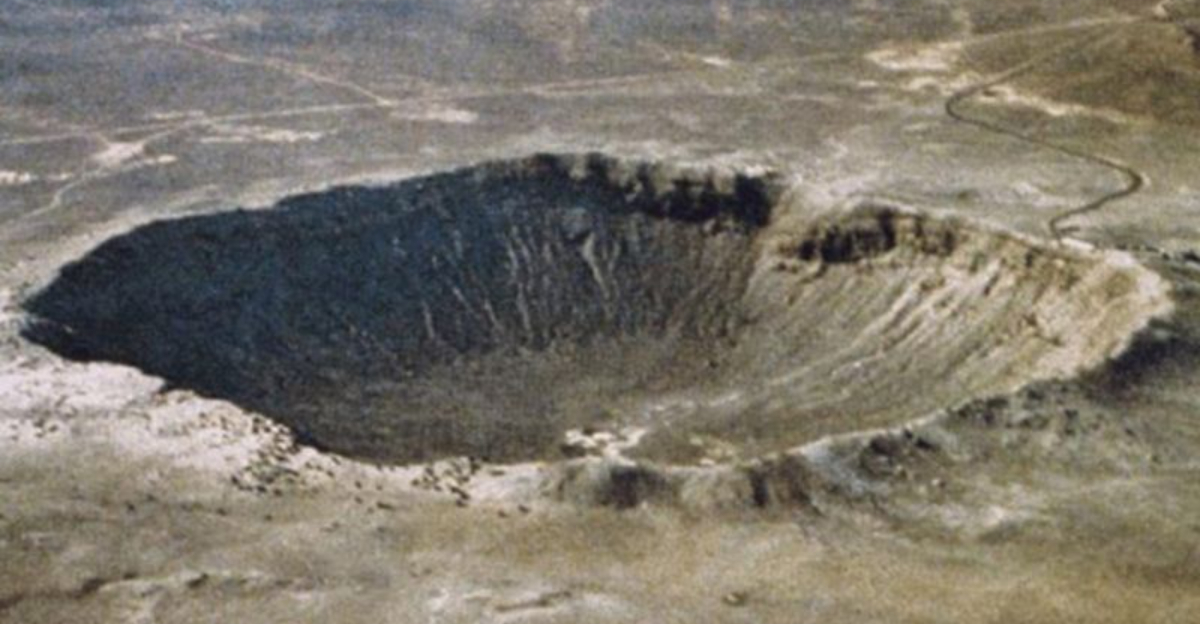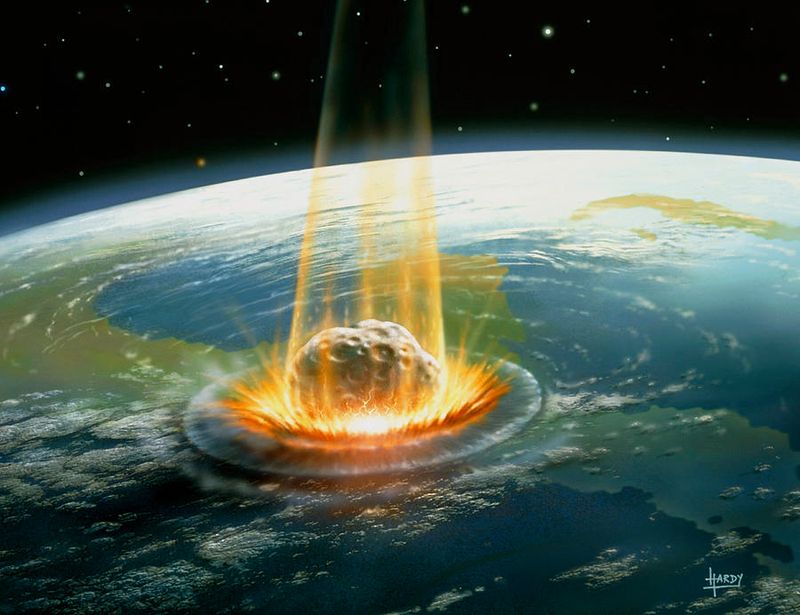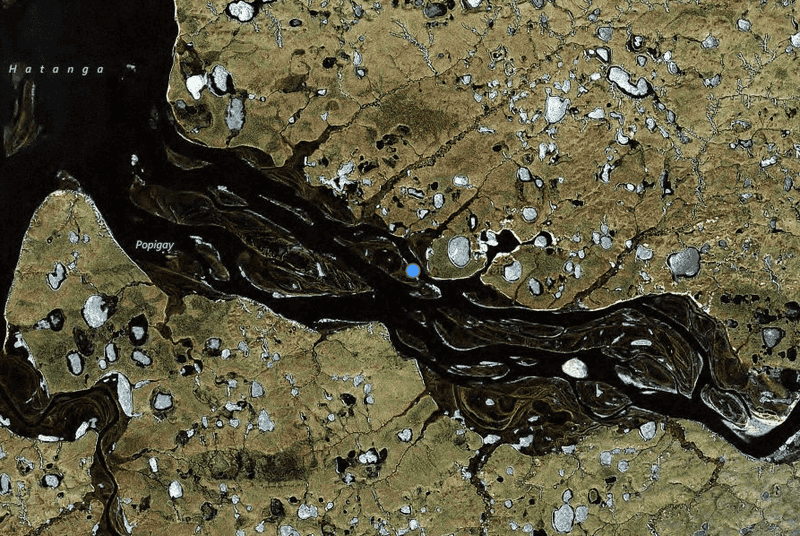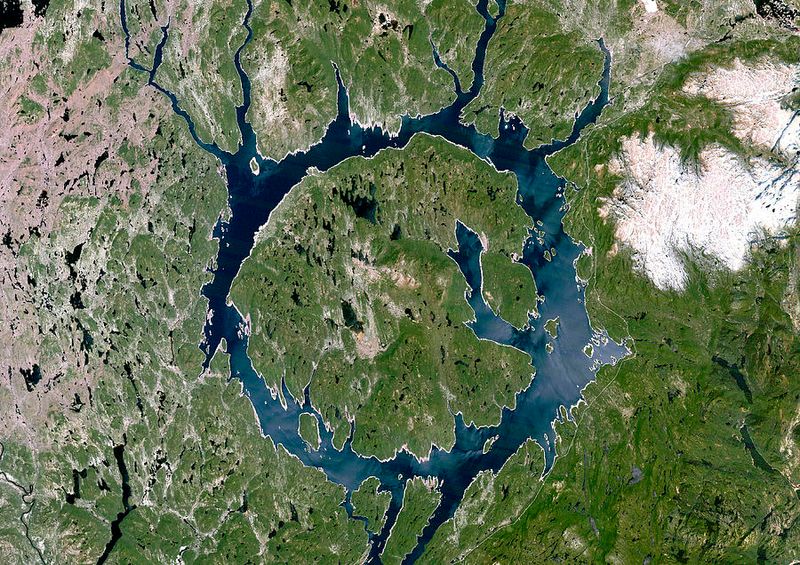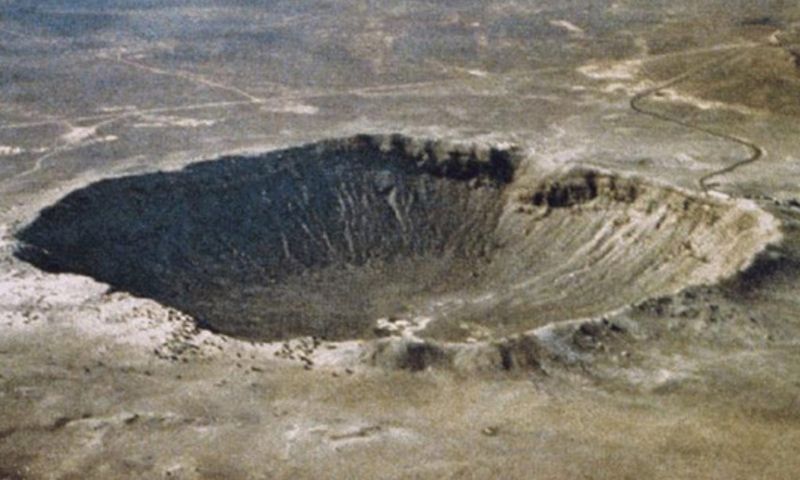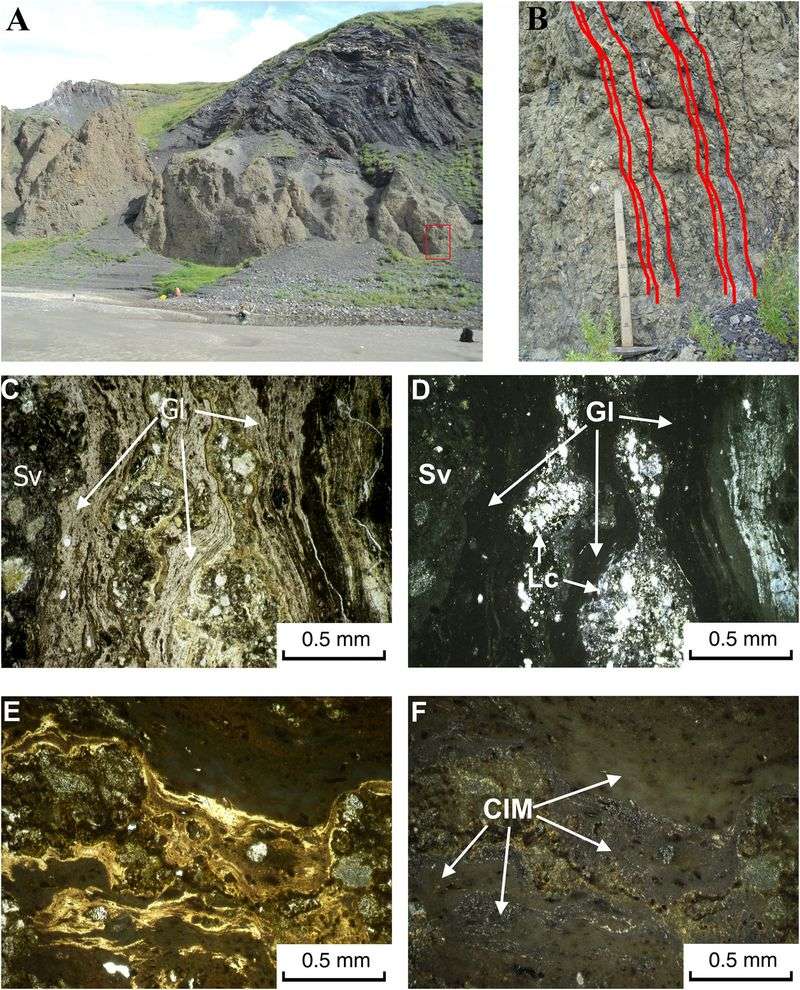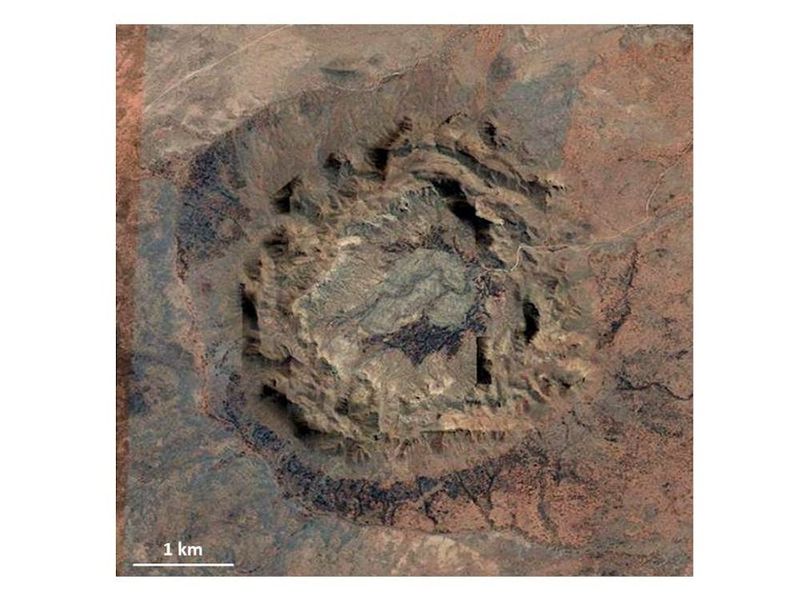Earth has been bombarded by space rocks throughout its 4.5-billion-year history. These cosmic collisions have shaped our planet’s geology and even influenced the evolution of life.
From wiping out the dinosaurs to creating diamond fields, the scars of these massive impacts tell dramatic stories of our planet’s violent past.
1. Chicxulub: Dinosaur Doomsday
The most famous asteroid impact in Earth’s history struck the Yucatán Peninsula of Mexico 66 million years ago. This massive rock, roughly the size of Mount Everest, hit with the force of billions of atomic bombs.
The resulting firestorms, tsunamis, and climate change wiped out 75% of all species, including the non-avian dinosaurs. Scientists found the buried crater in the 1970s while searching for oil.
Sediment layers worldwide contain an unusual amount of iridium from this time period – a telltale signature of this extraterrestrial visitor that forever changed life on our planet.
2. Vredefort: Earth’s Biggest Scar
Hidden in the rolling hills of South Africa lies the largest confirmed impact structure on Earth. When this asteroid struck 2.02 billion years ago, it created a crater nearly 300 kilometers across – wider than many countries!
The impact was so powerful it melted and deformed rocks deep in Earth’s crust. Today, only the central ring structure remains visible after billions of years of erosion.
Declared a UNESCO World Heritage site in 2005, Vredefort provides geologists with a rare window into ancient Earth and the catastrophic forces that have shaped our world throughout deep time.
3. Sudbury Basin: Canada’s Mineral Treasure
An enormous asteroid crashed into what is now Ontario, Canada about 1.85 billion years ago. The cosmic impact melted vast regions of Earth’s crust, creating a cauldron of superheated rock that slowly cooled and settled.
This violent event had an unexpected benefit for humans: as the molten rock cooled, it concentrated valuable metals like nickel, copper, platinum, and palladium. The Sudbury Basin became one of the richest mining regions on Earth.
Miners have extracted billions of dollars worth of metals from this impact site, making it perhaps the only asteroid strike that has directly benefited human economies.
4. Popigai: Diamond Factory
When a massive asteroid slammed into northern Siberia 35 million years ago, it created something extraordinary. The tremendous heat and pressure instantly transformed carbon-rich rocks into diamonds – trillions of carats worth!
Located in one of Earth’s most remote regions, Popigai Crater remained largely unexplored until the 1990s. Russian scientists discovered the diamonds aren’t just abundant but unique – they’re harder than normal diamonds due to their unusual crystal structure.
Despite containing enough diamonds to supply global markets for thousands of years, the extreme Arctic location has prevented large-scale mining operations from tapping this extraterrestrial treasure chest.
5. Manicouagan: The Eye of Quebec
From space, this Canadian crater looks like a giant eye staring up at the cosmos. Formed 215 million years ago when a 5-kilometer asteroid struck what is now Quebec, the impact created a distinctive ring-shaped lake visible from orbit.
The collision released energy equivalent to millions of nuclear bombs, instantly vaporizing the asteroid and melting substantial portions of the surrounding Canadian Shield. Today, the crater’s central island, René-Levasseur Island, is one of the largest artificial islands in the world.
Although not linked to any mass extinction, the Manicouagan impact occurred during a time of significant evolutionary change as dinosaurs were beginning their rise to dominance.
6. Acraman: Life-Changing Collision
Around 580 million years ago, a massive asteroid crashed into what would become South Australia. The timing of this cosmic collision is particularly fascinating to scientists because it coincides with a crucial moment in Earth’s biological history.
Just after the impact, the fossil record shows a sudden explosion of complex life forms. Some researchers believe the Acraman impact may have triggered environmental changes that helped kickstart this evolutionary burst.
The crater is now heavily eroded, but its signature appears in rock layers across Australia – a layer of shattered minerals and glass beads that rained down after the devastating impact.
7. Morokweng: Asteroid Survivor
Buried beneath the Kalahari Desert in South Africa lies evidence of a catastrophic impact from 145 million years ago. What makes Morokweng truly special is what scientists found when they drilled into the crater in 2006.
Fragments of the original asteroid survived the impact! This remarkable discovery shocked scientists who believed asteroids completely vaporize upon impact. The surviving fragments were over 25 centimeters across – the largest ever found in an impact structure.
Analysis revealed the asteroid was an uncommon type called an L-chondrite. This rare preservation gives scientists a direct window into the composition of objects that have bombarded Earth throughout its history.
8. Kara: Arctic Devastation
Approximately 70 million years ago, a massive asteroid slammed into what is now the frigid Russian Arctic. The impact created a crater roughly 120 kilometers wide near the Kara Sea.
Scientists debate whether this impact might have contributed to the weakening of dinosaur populations even before the more famous Chicxulub impact. The remote location makes studying this crater challenging, with much of it now submerged underwater.
Unique minerals formed by the extreme heat and pressure of the impact are found throughout the region. These shock-metamorphosed rocks contain diamonds and other minerals that only form under the incredible forces generated by cosmic collisions.
9. Chesapeake Bay: America’s Hidden Impact
Approximately 35 million years ago, a massive asteroid plunged into the Atlantic Ocean near what would become Virginia. The 3-5 kilometer space rock created an 85-kilometer-wide crater that remained hidden until the 1980s when drilling projects revealed its existence.
The impact triggered a mega-tsunami that likely swept over the Blue Ridge Mountains. Today, the crater affects regional groundwater – creating a vast reservoir of briny water while also influencing the current shape of Chesapeake Bay.
Most residents of Washington D.C., Virginia, and Maryland have no idea they live near one of Earth’s major impact sites, as the crater lies buried beneath hundreds of meters of sediment.
10. Woodleigh: Extinction Mystery
Hidden beneath the Australian Outback lies the enigmatic Woodleigh crater, formed approximately 360 million years ago. The timing of this massive impact intrigues scientists because it coincides with the Devonian extinction – a major die-off that wiped out roughly 70% of marine species.
Discovered in 1979 during petroleum exploration, the true size of Woodleigh remains debated. Estimates range from 40 to 120 kilometers in diameter, depending on how researchers interpret geophysical data.
Unlike many impact sites, Woodleigh has few surface features, making it a geological detective story. Scientists continue investigating whether this cosmic collision might have triggered one of Earth’s great extinction events.
